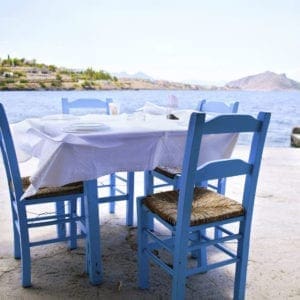
“I am as old,” he likes to say, “as Mickey Mouse.” And, we are to understand, just as famous.
In fact, the mouse is two years younger than this week’s icon, Paul Bocuse.
The family tradition
Ten generations of Bocuses had been chefs in the small village of Collognes-au-Mont-d’Or before Paul was born in 1926. His father had been apprenticed in the same kitchen as Fernand Point – the master responsible for the birth of modern cuisine at La Pyramide. Bocuse would be apprenticed to him. His destiny was almost assured.
The war interrupted his training. Still a teenager, he fought with the Free French Army until he was wounded by German machine gun fire. Then, in 1948, he found himself in the kitchen of La Pyramide, learning from the master.
Instead of taking steps to curb Bocuse’s natural exuberance Point gave it every encouragement. Though not without further trial. His father’s tiny hotel had been damaged in the war and only roughly restored. Worse, his impecunious grandfather had sold not only the family restaurant but also the rights to the family name. But from such difficult circumstances a man might still become the greatest chef in France – if so he willed.
Lessons learned
More than anything, the great lesson learned under Point was the true value of produce. Point’s practice of personally going around the markets of Lyon was passed onto Bocuse and he maintained this habit long after he became famous. His mission was always to encourage a return to the intrinsic taste of produce, enhanced by ingenuity and subtle skill. He did not claim novelty, and felt that a great chef is one who finds maybe two new dishes in a lifetime. He knew that a truly great chef is one who, like Point, inspires a generation of pupils. And with all his soul he believed in the integrity of French cuisine.
He also believed in Paul Bocuse. That was what he called his restaurant long before the practice was commonplace. He had his third Michelin star by 1965, yet still had the bravado to serve the prominent French food critic Henri Gault a dish of fresh haricots verts he picked from his garden that morning, simply boiled and dressed with olive oil, shallots and salt. For Mr Gault it was a revelation. For the rest of the world, it was perhaps the beginning of nouvelle cuisine.
The signature dish
While personality is mostly forged early in life, one yet may wonder if that personality was not fully cemented until President Giscard d’Estaing’s famous luncheon, which Bocuse catered, where he was presented with the Légion d’honneur and at which he, in turn, presented what was to become his most famous dish – a soup of black truffles. It speaks of the contradictions evident in the main himself that for all the luxury of its key ingredients, truffle and foie gras, the signature dish remains a soup, and a relatively simple one at that.
It has been said that Bocuse accepted the Legion of Honour not for himself, but on behalf of French cuisine. What’s more, it serve to highlight the undeniable connection between the classic techniques of Escoffier, the innovations of Point and the revolutions of the nouvelle cuisine that Bocuse and his fellow chefs championed.
Finally, it features that little touch of personal genius that Bocuse undoubtedly brought to cooking: the pastry lid that seals in the essential aroma of the truffle, so that when the diner plunges in with the spoon he or she is for a moment literally overwhelmed by its impact.
At 90, Bocuse remains a living icon of the culinary industry, but one who does not take himself too seriously. “Life is a farce,” he says. “That is why I like jokes. Imagine, when the President of the Republic invited the President of the United States to dine, he also invites me. It is ridiculous.”


















